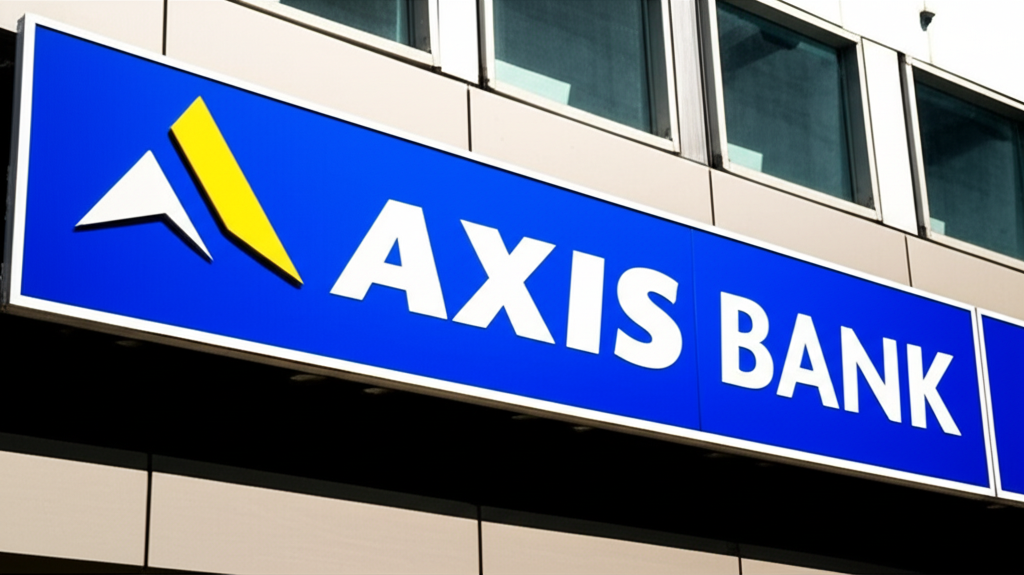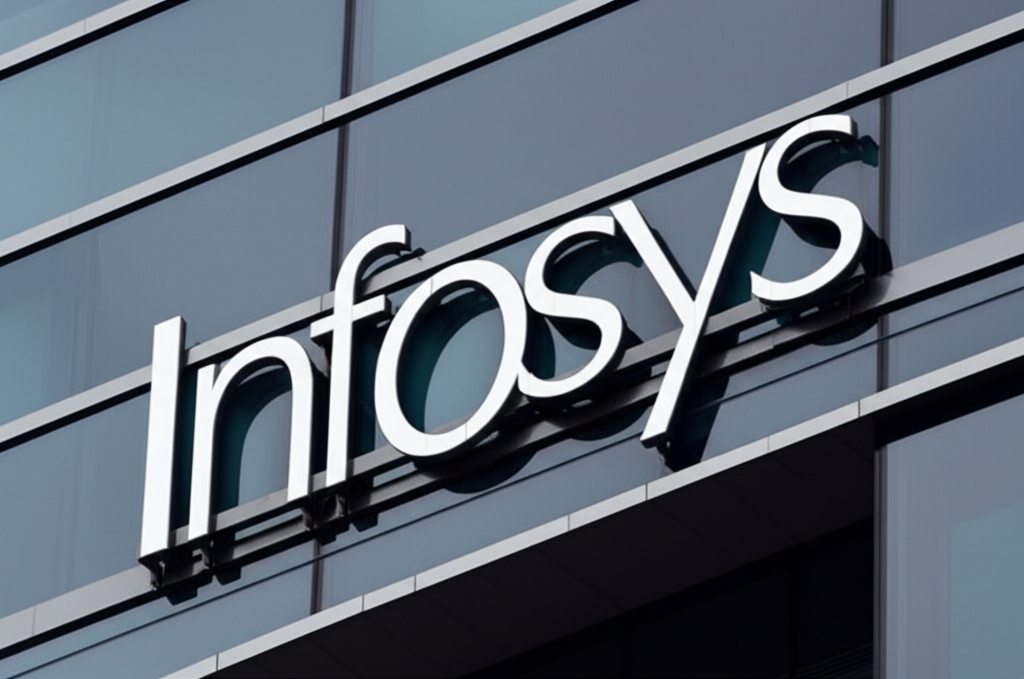Amidst the ever-changing scenario of the Indian stock market, the performance of public sector banks (PSBs) continues to be a crucial factor for both investors and analysts. Union Bank of India, one of the prominent players in the public sector banking space, saw its share price dip by 5% to ₹124.77 on April 4, 2025. This drop followed the release of its business update for the fourth quarter (Q4 FY25), which reported an increase in total business but did not meet investor expectations. In this blog, we’ll take a closer look at the bank’s Q4 FY25 results, its impact on the stock, and the outlook for Union Bank and the broader public sector banking sector.
1. The Key Numbers from Union Bank’s Q4 FY25 Update
Union Bank of India’s Q4 FY25 announcement registered a rise of 7.85% in the business as a whole, to ₹22,92,625 crore for the March 2025 quarter. What seems to be a good reading on the top line was masked by some points of note regarding the report in the eyes of investors and experts. Let us analyze these amounts in more detail:
a. Gross Advances
The gross advances of the bank were ₹9,82,875 crore, which is an 8.62% growth over the corresponding period of last year (Q4 FY24), where the gross advances were ₹9,04,884 crore. This growth in advances indicates the success of Union Bank in increasing its lending book, which is a good sign of its overall business health. Gross advances play a significant role in assessing the bank’s capacity to earn interest income, which is a significant source of revenue for the bank.
b. Total Deposits
The total deposits of the bank increased by 7.22% year on year (YoY) to ₹13,09,750 crore in Q4 FY25. Deposits form a big chunk of the bank’s balance sheet since they are the funds that are utilized for lending money. This deposit growth, however good, fell marginally below the anticipated level considering the general advance growth. The deposits help in keeping liquidity and enabling the disbursement of loans in the future.
c. CASA Growth
Union Bank’s Indian Current Account and Savings Account (CASA) was ₹4,26,242 crore, which is 3.94% higher from ₹4,10,071 crore last year. CASA deposits are desirable for banks because they are inexpensive funds. Banks consider a stronger CASA ratio as a favorable sign of an affordable cost of funds and healthy customer confidence and relationship with the bank.
d. Retail Advances
The retail growth in domestic markets of Union Bank saw a strong increase of 22.14% YoY to ₹2,16,777 crore in Q4 FY25. Retail banking has been one of the growth drivers for many banks, and Union Bank’s growth in this space suggests that it is effectively tapping into the increased demand for personal loans, home loans, and other retail offerings. This growth in retail advances will be expected to drive increased revenue generation, especially in the interest income category.
2. How Did the Q4 FY25 Update Affect the Stock Price?
Even though the overall business, gross advances, and retail advances have been growing positively, Union Bank’s stock price dipped significantly by 5% on April 4, 2025. The primary reasons for this decline can be attributed to some market dynamics:
a. Reality vs. Expectations
The market has had great expectations of Union Bank’s performance, and any marginal movement away from expectations will attract a swift response. While announcing business growth, the figures fell short of analysts’ expectation of quality growth, especially in asset quality as well as net interest margins (NIMs). The market’s response to such figures could be fueled by the general trend of profit-booking in the banking sector.
b. Profit Booking in the Stock Market
During the last few months, Union Bank shares had gained considerable strength, rising by almost 27.53% in Q3 FY25. This steep increase in the stock price resulted in a period of profit-booking, as investors tried to book profits prior to the announcement of the Q4 results. Profit taking usually takes place when the investors feel that a stock has touched its near-term high, and this might have been one of the causes for the drop in Union Bank’s share price after the results announcement.
c. Drop in Net Interest Margins (NIMs)
Net Interest Margins (NIMs) are among the most important bank profitability indicators. A fall in NIMs implies that the bank’s capacity to make a spread between the interest on loans and the interest paid on deposits is diminishing. For Union Bank, NIMs have faced pressure as a result of increasing competition in the banking industry and narrowing interest rate spreads. The market’s apprehension regarding the future direction of NIMs probably played a role in the negative market mood following earnings announcement.
d. Short-Term Forecast and the General Market Mood
The general mood in the Indian stock market was also responsible for the decline in Union Bank’s shares. The Indian stock market has been on a roller coaster ride, and financial stocks, particularly those of the public sector, have been struggling in terms of growth as well as valuations. While investors and analysts absorbed the Q4 FY25 business update, the market adopted a guarded approach, as investors were concerned about the general economic environment, the possibility of a shift in interest rates, and asset quality problems in the banking sector.
3. The Bigger Picture: What’s Driving Growth in Union Bank?
In spite of short-term fluctuations, Union Bank is a solid entity in the space of public sector banking. The following key drivers are still playing in favor of its long-term growth prospects:
a. Retail Banking Growth
The high rate of growth in retail advances is a positive indication for Union Bank. The segment of retail banking comprising personal loans, home loans, and auto loans has been one of the fastest-growing sectors in the Indian banking industry. Growing middle class and growing credit demand are propelling retail banking growth in India. Union Bank’s emphasis on this segment trends with the overall market and forms a strong platform for future development.
b. Strong Capital Adequacy
Union Bank has been holding a robust capital adequacy ratio, which means that the bank is capable of withstanding potential losses and still lend money in a financially prudent way. A robust capital base assists the bank in withstanding economic downturns and external shocks, which can be of great significance during uncertain periods.
c. Emphasis on Digital Transformation
Similar to most other banks, Union Bank is emphasizing digital banking and technological innovation. The emergence of fintech and digital banking in India has opened up new growth prospects for conventional banks. Union Bank’s investment in digital banking platforms, mobile banking applications, and online loan processing systems will enable the bank to access a broader customer base and enhance operational efficiency.
d. Enhanced Asset Quality
In spite of short-term difficulties in asset quality, Union Bank has been engaging in enhancing its non-performing asset (NPA) ratio. Efforts by the bank to enhance its risk management mechanisms and retail banking push will assist in reducing the effects of bad loans. If the bank manages to lower NPAs, the company might experience better profitability and stock market performance in the future.
4. Future Prospects for PSU Banks and Union Bank
The general future prospects of PSU banks, including Union Bank, are optimistic. Although the Q4 FY25 performance might have disappointed some investors, Union Bank’s long-term growth opportunities remain intact. The following factors need to be taken into account while analyzing the future performance of the bank:
a. Industry-Wide Growth
The Indian banking industry is likely to continue its growth on the back of robust economic recovery, growing credit demand, and government-sponsored programs like Pradhan Mantri Awas Yojana (PMAY) and Jan Dhan Yojana. Public sector banks like Union Bank are likely to gain from these trends, especially in segments like housing finance and retail credit.
b. Asset Quality Improvement
Since the economy is stabilizing and the risk of default on loans is reducing, Union Bank and the other PSU banks will gain from better asset quality. Resolution of stressed assets, coupled with a fall in bad loan provisions, can lead to higher profitability in the next few quarters.
c. Government Support and Policy Measures
The Indian government’s encouragement of PSU banks, such as recapitalization and regulatory reforms, remains a major driving force behind the growth of these banks. The government’s dedication to economic reforms and financial inclusion will also play a role in the long-term growth of Union Bank and other public sector banks.
5. Conclusion: Is Union Bank a Good Investment Opportunity?
Even with the recent short-term drop in its share price, Union Bank of India is still a solid player in the Indian banking industry. The bank’s emphasis on retail banking, digital drive, and enhancing asset quality puts it in a good position for long-term growth. Even though short-term volatility can still influence the share, especially with the issues in NIMs and investor sentiment, overall growth potential for the bank and the sector remains intact.
For long-term investors, Union Bank offers a good opportunity, provided it is able to weather the existing difficulties and continue benefiting from the increasing demand for retail banking services. For short-term traders, however, the stock can be volatile, and investors need to closely watch the performance of the bank in the next quarters.
With the Indian banking industry undergoing transformation, Union Bank of India has to evolve in line with changing market dynamics, enhance its asset quality, and upgrade its digital presence to continue its competitive advantage. For investors, keeping track of the performance of the bank and macroeconomic variables will be instrumental in making informed investment decisions.
Finally, Union Bank’s recent quarterly report, though mixed, must be considered in the context of the bank’s solid base and the continuing growth prospects of the Indian banking industry. The future for Union Bank remains bright, and with the proper strategies in hand, it could again become a high performer in the PSU banking sector.















0 Comments